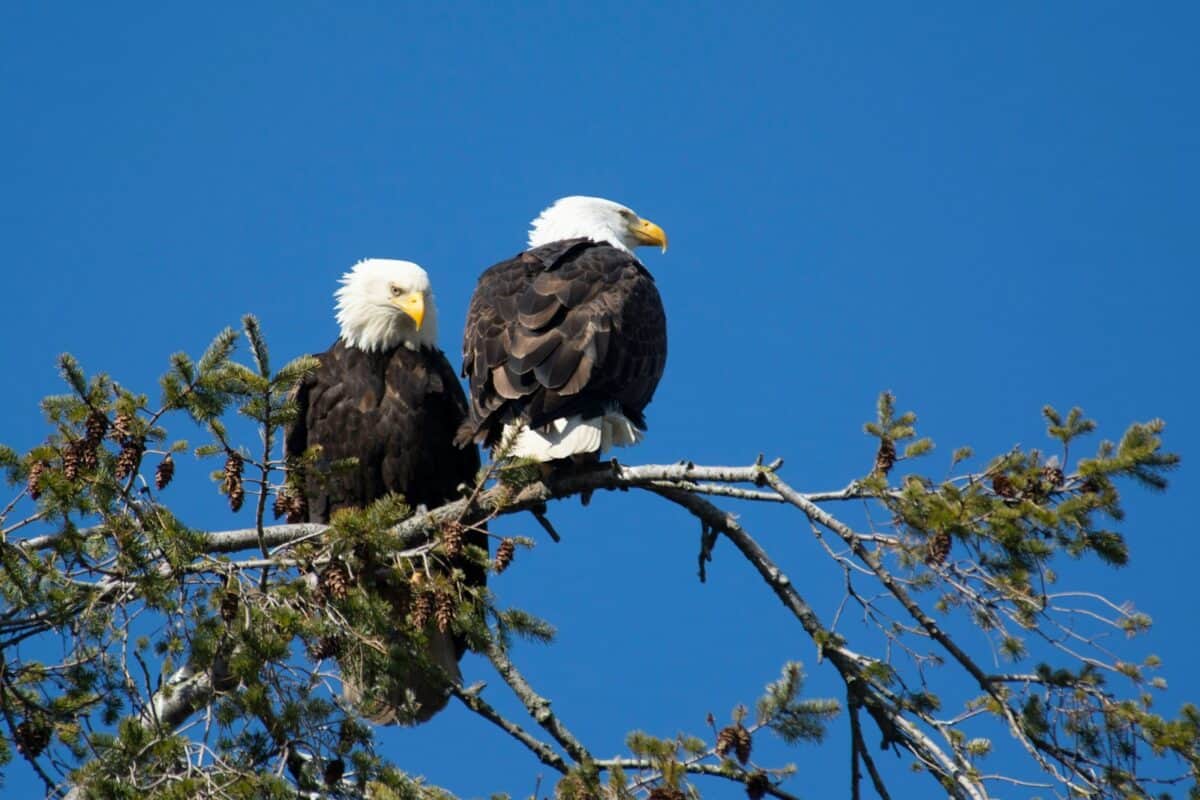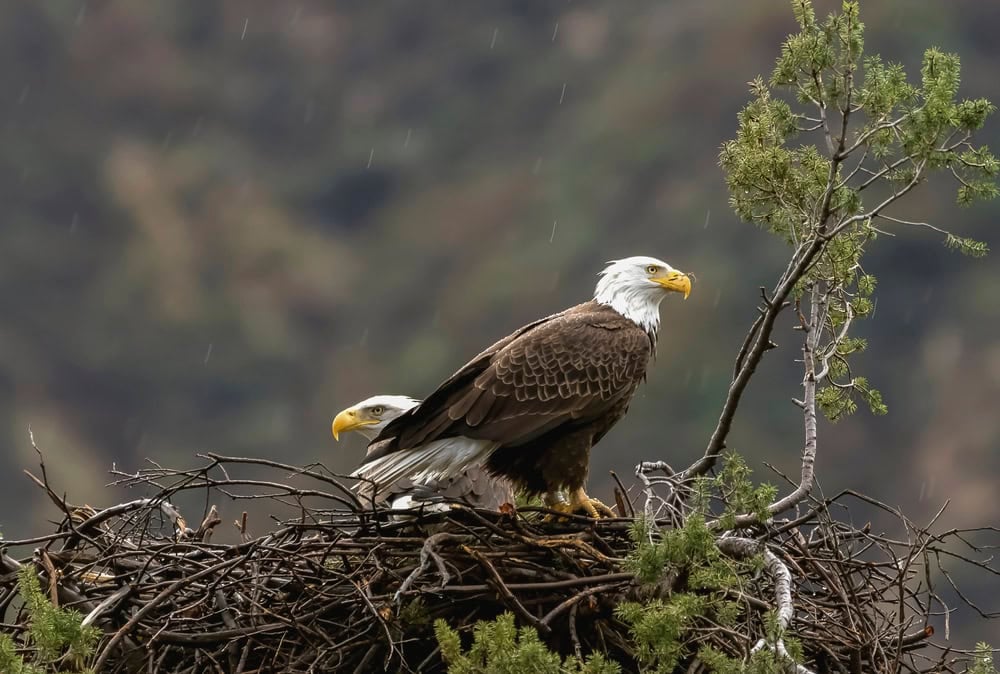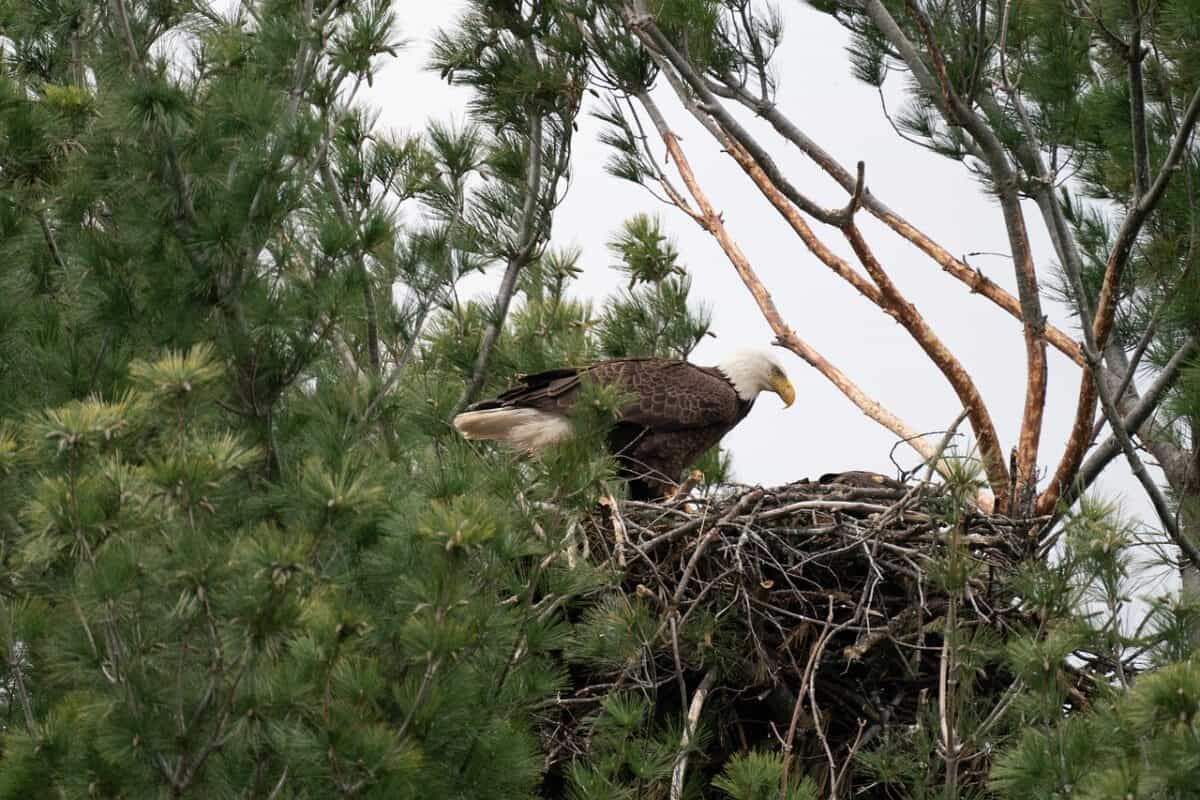The bald eagle, an iconic symbol of American freedom and national pride, has fascinated bird watchers and ordinary citizens alike for centuries. In a remarkable recent discovery, a record-breaking bald eagle nest has been found in the scenic landscapes of Minnesota. This monumental find highlights both the resilience of these majestic birds and the conservation efforts that have allowed their populations to thrive. Dive into this article as we explore both the fascinating background of bald eagles and the details of this extraordinary nest.
Historical Importance of Bald Eagles in America

The bald eagle holds a special place in American history and culture. As the national bird of the United States, it symbolizes strength, courage, and freedom. Its image adorns everything from the Great Seal of the United States to currency, showcasing its significance within national identity. Protection efforts over the years have ensured that this symbol remains vibrant and thriving.
Physical Characteristics of Bald Eagles

Bald eagles are impressive creatures, known for their robust bodies and white-feathered heads that starkly contrast with their dark brown plumage. Adult bald eagles boast a wingspan that can exceed seven feet, with powerful talons and keen eyesight that make them expert hunters. These traits have enabled them to be top predators in their habitat.
The Habitat of Bald Eagles

Bald eagles are primarily found in North America, with habitats ranging from the Alaskan wilderness to the forests and coastal areas of the contiguous United States. They nest in tall trees near large bodies of open water where they can find abundant food sources like fish, their primary diet.
Nest Building Behavior

Bald eagles are known for building large nests, which can measure up to several feet across and weigh more than a ton. Constructed mainly from sticks and lined with softer materials such as moss and grass, these nests serve as crucial sites for the rearing of eaglets and are often reused and expanded year after year.
Location and Discovery of the Minnesota Nest

In the expansive Tamarac National Wildlife Refuge, avid bird watchers and wildlife officials made a groundbreaking discovery. Perched atop a grand white pine tree, a nest measuring over 24 feet deep and 15 feet across was found, setting the record for the largest known bald eagle nest. This Minnesota nest eclipses the previously known record-holding nest found in Florida.
Significance of the Nest’s Size

The enormity of this nest is a testament to the strength and longevity of the bald eagle pair that constructed it. Large nest sizes can indicate a stable and successful nesting site, which enhances the likelihood of successful breeding and chick survival. It’s a testament to the scale and intricacy of bald eagle life cycles.
Conservation Success Stories

The discovery of such a large nest is not just a novelty; it signifies the success of conservation efforts that have brought bald eagle populations back from the brink of extinction. Due to widespread pesticide use, particularly DDT, bald eagle numbers once plummeted. However, dedicated conservation measures including pesticide bans and legal protections have led to a resurgence in their populations.
The Role of Wildlife Refuges

Wildlife refuges like Tamarac play an essential role in the protection and study of bald eagles. These dedicated areas provide a sanctuary where eagles can live free from the threats that once endangered their populations. Managed carefully, these refuges allow researchers and wildlife enthusiasts to observe these birds up close, gaining valuable insights into their life and habitat needs.
The Impact of Public Awareness and Education

The increase in bald eagle sightings and the discovery of massive nests like the one in Minnesota help boost public interest and awareness regarding wildlife conservation. Educational programs around such findings can inspire future generations to engage in conservation and understand the broader ecological roles that predators like bald eagles play.
Challenges Still Facing Bald Eagles

Despite conservation success, bald eagles still face threats, including habitat loss, climate change, and lead poisoning from ingested lead shot used in hunting. Ongoing conservation efforts must address these issues to safeguard the future prosperity of bald eagle populations.
The Future of Bald Eagles in America

The ongoing observation and conservation of bald eagles are crucial for continued success. As national symbols, their preservation reflects the country’s commitment to wildlife protection and environmental stewardship. Ensuring that eagles continue to thrive requires concerted, informed efforts from both governmental bodies and the public.
What This Discovery Means for Conservation

The discovery of the record-breaking nest highlights not only a triumph in conservation efforts but also presents an opportunity to renew efforts in wildlife protection and habitat restoration. It reminds us that with persistence and care, endangered species can be saved and even flourish, inspiring action in the global effort for conservation.
The awe-inspiring discovery of the record-breaking bald eagle nest in Minnesota stands as a beacon of success in the realm of wildlife conservation. Through sustained efforts and public engagement, these majestic birds continue to soar, symbolizing the triumphs of conservation initiatives and offering hope for the future of other at-risk species.
- Eagles vs. Snakes: Who Would Win? - August 9, 2025
- Why Pandas Were Once Nearly Extinct—and How China Saved Them - August 9, 2025
- This Fish Has the Most Teeth in the Ocean—And Uses Them Well - August 9, 2025

